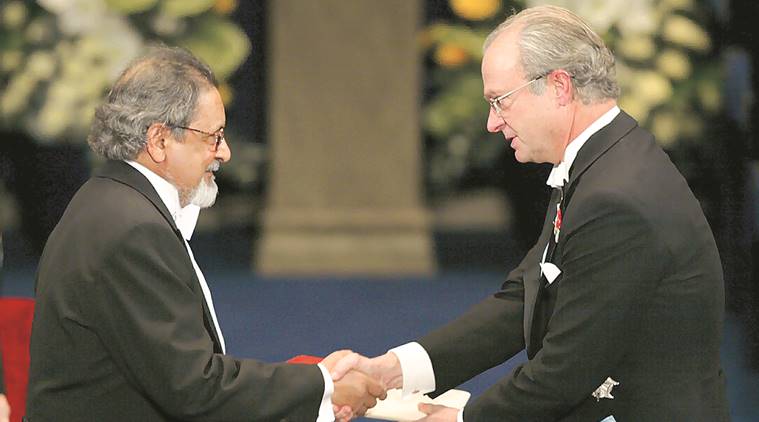VS Naipaul—The Man Who Could be Magic
The shortcomings of his non-fictional work cannot take away from the fact that VS Naipaul was one of the greatest raconteurs of our time

Receiving the Nobel Prize in Literature in 2001 from Sweden’s King Carl Gustaf in Stockholm (AP)
At the age of 16, when I decided to read nothing but literary fiction, there was only one book by VS Naipaul in our home library, Miguel Street. Being young, I was quick to judge the book by its cover, which had caricatures of very thin and extremely fat people. So I put the book away, dismissing it as a book of jokes, and decided to read editions that looked serious by virtue of their covers. It was probably a year later that I picked it up again and decided to give it a shot. Even before I finished the first page, I knew I would be shaken by the book. I remember sitting up a whole night to finish Miguel Street, which is set in Trinidad and Tobago, and putting the book back on the shelf just after sunrise. I remember looking out of the window and wondering if the sun had set in Trinidad and Tobago and streetlights had come on Miguel Street.
Overwhelmed by Miguel Street, I decided to read every word Naipaul had written and travelled to the next town to borrow his books from the British Council Library. A House for Mr Biswas, which I consider to be his best, was the next book I read. The book impacted me in two different ways; it broke my heart with its surprising candidness and immaculate craft, and it crushed my confidence to be a writer for the same reason. After reading each book by him I become more evolved as a reader until I stopped reading him in 2001, after a few pages of Half A Life. The book was highly readable, but the voice was not that of the same Naipaul who had left me speechless with his impeccable prose and surprising insights into human life. When I say voice of Naipaul, I literally mean it. Because I used to believe that you didn’t actually read Naipaul, you opened his book and listened to his voice narrating captivating tales in a lucid voice. In Half A Life, the voice had lost its charm, it had become unpleasantly gruff.
I often hear Naipaul’s critics refer to him as a rotten genius. But I think they confuse his novels with his works of non-fiction. I would like to see Naipaul’s fiction and non-fiction in completely different ways. While I admire him as a storyteller and recommend his novels (most of them) to anyone who aspires to be a writer, I vehemently disagree with his points of view as a writer of non-fiction. I believe his books of non-fiction are, at least in places, works of mere imagination, abound with deliberate inaccuracies, and the India he had sketched is a world apart from the India that exists. But such fallacies don’t make him less of a raconteur. They should not.
In the beginning of my writing career, I used to nurture a dream that had Naipaul as the central character. And it was about strolling past his London home on a wintry morning and running into him as he came out for his morning walk. Even in a daydream, I found it hard to muster up the courage to strike a conversation with him, to tell him that I, too, was a writer. I was certain that, intimidated by his talent, I would fumble for words and he would walk away with a sneer. And I would be left to watch his shadow dancing on the tarmac like in the final passage of Miguel Street.
Salim is the author of The Small-Town Sea and The Blind Lady’s Descendants






















No hay comentarios:
Publicar un comentario